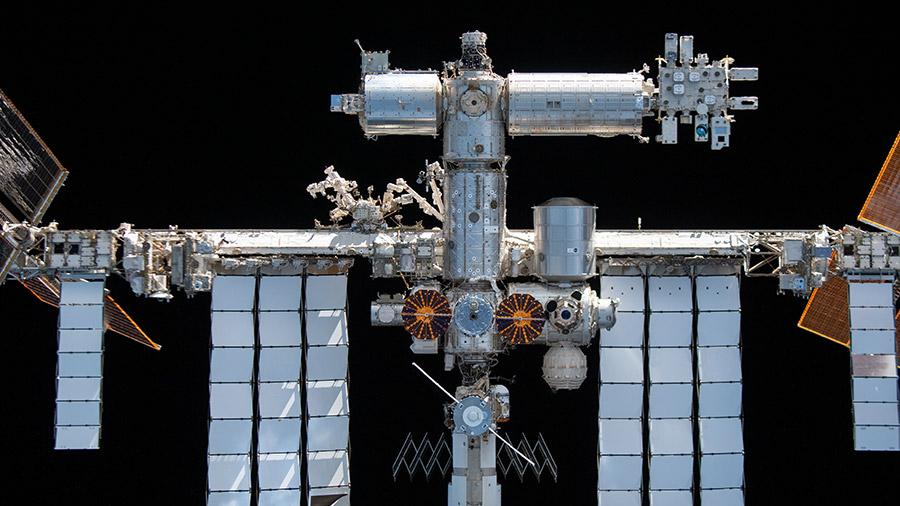
ISS
The seven-person International Space Station (ISS) conducted an altitude-raising maneuver late Oct. 24 to avoid orbital debris associated with a former Soviet electronic and signals intelligence satellite that was the target of a November 2021 Russian anti-satellite test.
The roughly 5-min. Pre-Determined Debris Avoidance Maneuver (PDAM), which was initiated at 8:25 p.m. EDT using propulsion from the Russian Progress 81 resupply capsule docked to the station’s Russian Zvezda module, had no impact on operations underway aboard the orbital science laboratory, according to a follow-up NASA status report.
The maneuver increased the apogee, or highest point in the ISS’ orbit, by 2/10ths of a mile, and the perigee, or lowest point, by 8/10ths of a mile. “Without the maneuver, it was predicted that the fragment could have passed within about three miles from the station,” according to the status update.
The Nov. 15, 2021, Russian anti-satellite test, which destroyed the inoperative Cosmos 1408 satellite, prompted global protests and created a cloud of orbital debris that included approximately 1,500 fragments large enough to be tracked, according to the NASA Space Science Data Coordinated Archive.
The avoidance maneuver was carried out on the eve of Russia’s planned launch of the Progress 82 resupply mission to the ISS from Baikonur Cosmodrome, Kazakhstan.
The launch is planned for Oct. 25 at 8:20 p.m. EDT. Progress 82 is to deliver three tons of food, supplies and propellant to the ISS Expedition 68 crew, which includes three NASA astronauts, a Japan Aerospace Exploration Agency astronaut and three cosmonauts, including current ISS Commander Sergey Prokopyev.
With a successful launch, the Progress 82 is to make an automated docking with the Russian Poisk module on Oct. 27 at 10:49 p.m. EDT.
Progress 81, which provided thrust for the debris avoidance maneuver, arrived at the ISS on June 3. Russia’s Progress 80 resupply capsule, which launched and docked in mid-February, departed the Russian segment Poisk module late Oct. 23 to free a docking port for Progress 82 and carry out a destructive atmospheric re-entry maneuver over the Pacific Ocean.






Comments
Bernard GUILLAUME